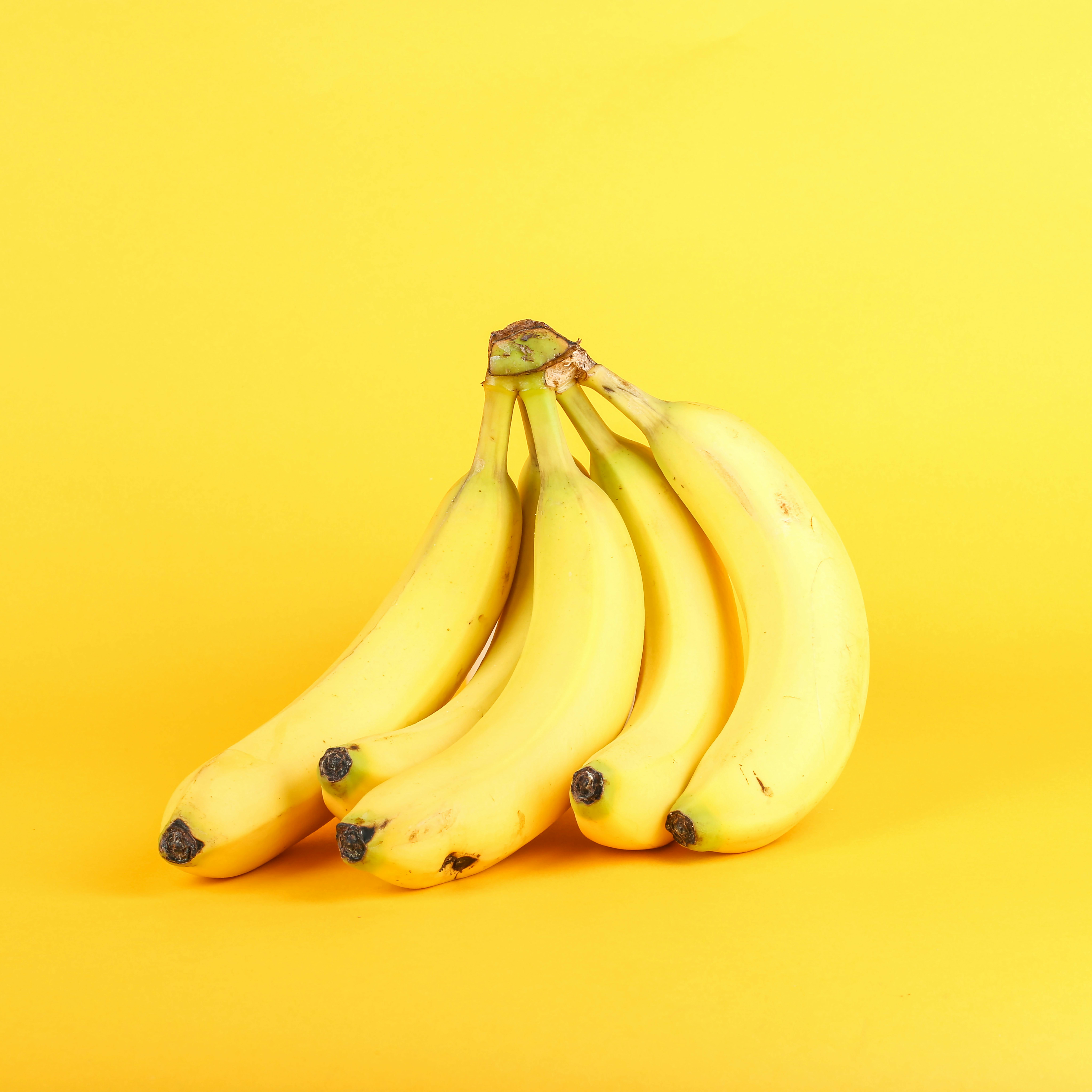Yes — dogs can eat bananas and there are even a fair few reasons to suggest they should. Bananas can be a flavorsome treat, eaten in moderation — but as is the case with pretty much anything that tastes good, it’s possible to overdo it and effectively cancel out any health benefits.
In our guide to bananas for dogs, we’ll learn more about the health benefits of this particular fruit, discover how much banana is too much, and understand what to watch out for when feeding your dog this treat.
Bananas are a popular part of humans’ diet — in fact, it’s estimated that 100 billion are consumed worldwide every year. Some of these are eaten by themselves as an energy-boosting snack, while others are used as an ingredient in baked goods, breakfasts or even curries.
There’s a reason for the fruit’s ubiquity in global cuisine — bananas are jam-packed full of nutritional benefits and these are just as good for a dog’s body as they are for humans. Here are some of the main perks:
- Fiber — There’s around 0.09oz of fiber in each banana, although this can, of course, vary according to the size. This makes it a good top-up alongside the fiber already in your dog’s food and will help keep their digestive system running smoothly.
- Vitamins — Bananas contain two vitamins — B6 and C. The former helps boost the brain, nervous system and immune system, while the latter is essential when it comes to the health of teeth, bones and cartilage. It’s possible to find both of these in supplements, but your dog will almost certainly prefer it in the form of a slice of banana.
- Minerals — As well as vitamins, bananas are rich in vital minerals, too. One of these is potassium, which is essential when it comes to nerve and muscle function, as well as for regulating fluid levels in cells. Another is magnesium, which is great for muscle and bone health.
If there’s one person who knows what’s good and what’s not for a dog, it’s your vet — getting a wellness plan will put you in regular contact with them, as well as covering all the necessary jabs, tests and treatments to keep your pet healthy.
If that’s convinced you to treat your dog to some banana, there are plenty of ways you can go about feeding him or her.
The most obvious way is to break or slice bits off and feed it to them as is. However, you can get a little creative if you prefer — here are a few ideas:
- Mash up some banana and add to their meal bowl along with other food
- Put a slice inside a treat toy to give their brain a little stimulation
- Freeze slices of banana to give to your dog on particularly hot afternoons
- Blend together with other dog-friendly fruits for a tasty smoothie
- Mix with yogurt or peanut butter before spreading on a lick mat
How Much Banana Can a Dog Eat?
Just as humans can’t eat too many bananas due to the risk of a potassium overdose, dogs shouldn’t be allowed to go overboard on the fruit, either. Not only are they pretty deficient in nutrients compared to well-rounded dog food, but consuming too much fiber or sugar isn’t good for an animal’s insides.
When it comes to recommended amounts, this largely depends on the size of your dog. As a rule of thumb, small dogs, such as
Toy or
Miniature breeds should be given no more than one or two slices, while the very largest of dogs — think
Newfoundlands or
Bernese Mountain Dogs — can have anything up to half a banana in one go.
In between these two extremes, pet parents can use their own judgment based on the size of their dog. However, it’s always best to always be slightly conservative when giving ‘human foods’ to a dog, as their digestive system can be a sensitive beast.
So we’ve pointed out the banana’s nutritional contents and versatility, but there are a few potential drawbacks when it comes to treating your pet to the fruit. Here are some things parents need to keep an eye on.
Allergies
If your dog has never tried a banana before, it’s best to only give a teensy portion the first time around. Why? Well, if your pet is unlucky enough to be
allergic to bananas, it’s best they only have a small amount in their system when they have a reaction.
After they’ve swallowed this sample, parents should watch out for the classic signs of allergic reactions. Usually, this will take the form of gastrointestinal trouble (
vomiting,
diarrhea and
lethargy) in the short term, but
itchiness, lesions and
ear infections are possible over time, too.
Sugar
One of the reasons that many athletes will chow down on a banana midway through an event is because they’re a great source of energy. And where does much of this energy come from? Carbohydrates, or sugar.
Just like humans, dogs shouldn’t have too much sugar in their diet, otherwise they run the risk of developing nasty health conditions such as
obesity,
diabetes or
pancreatitis.
This is also why it’s best practice to avoid giving your dog any recipe or product that uses bananas as a flavoring, as well as banana chips — these are more likely to contain high levels of sugar, as well as other substances, such as
xylitol, that are toxic to dogs.
If you notice any weight gain in your dog, you might have to lay off the bananas for a while — as well as any other treats.
Banana Peel
Although the flesh of the banana is perfectly edible, it’s a different story completely when it comes to the peel that surrounds it.
Sometimes they can contain high levels of pesticides which might adversely react with a dog’s insides, but they also pose a potential danger due to the massive amounts of fiber in the peel.
We know we only just raved about the benefits of fiber in a dog’s diet, but banana peels are mostly fiber and this makes them virtually indigestible. If your dog manages to swallow any banana skin, it could cause
an intestinal blockage, which requires urgent veterinary attention.
Some dogs are forever eating things they shouldn’t and when this happens, you need a vet to act quickly — a pet insurance policy will go some way to covering the costs when emergencies happen. 

